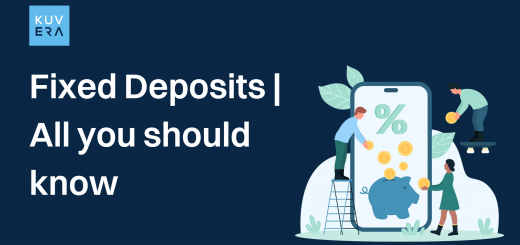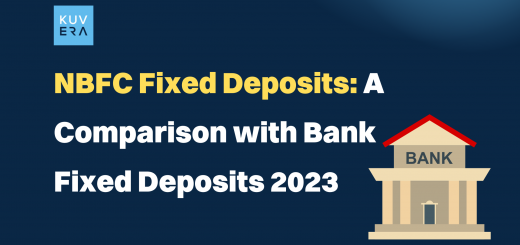Today we are going to discuss all about HDFC FD interest rates 2023 , we will also understand all about the benefits of FD as well as the unique features offered by SBI FD.
Fixed deposit
Fixed Deposit or FD is a type of bank account where you deposit a certain amount of money for a set period of time, usually ranging from a few months to several years. The bank pays you a fixed interest rate on your deposit during this time. Once the term (or “tenure”) of the fixed deposit is over, you can withdraw the original amount you deposited along with the interest earned.
Fixed deposits are considered relatively safe because they offer a fixed return on your investment, and the money is typically locked in for the agreed-upon term, which means you cannot withdraw it before the tenure ends without incurring penalties.
Fixed deposit accounts are provided by the majority of the country’s main banks, with terms ranging from as short as 7 days to as long as 10 years or more. Customers can select a period that best suits their needs. The interest rate, once set, does not change throughout the period, and upon maturity, the person will get a lump sum amount that covers both the regular investments and the interest gained.
HDFC Fixed Deposits
HDFC provides a variety of deposit options to facilitate both long-term and short-term investments by individuals. As one of the leading banks in India, its investment programs have a long history of impressive performance and outstanding returns, making them among the most dependable choices for investors. Here are some of the features of HDFC FDs that might make it the right choice for you.
Features of HDFC Fixed Deposit
Here are some of the features of HDFC fixed deposits:
- Tenure: HDFC Bank offers fixed deposit tenures ranging from 7 days to 10 years, providing flexibility for investors to choose the tenure that best suits their needs.
- Minimum Deposit Amount: The minimum deposit amount for HDFC Bank’s fixed deposits varies based on the type of FD and the tenure. For example, the minimum deposit for a regular FD with a tenure of 7 days is Rs. 5,000, while the minimum deposit for a tax-saver FD with a tenure of 5 years is Rs. 100.
- Interest Rates: HDFC Bank offers competitive interest rates on its fixed deposits, with rates ranging from 2.5% to 6.5% depending on the tenure and type of FD.
- Premature Withdrawal: HDFC Bank allows premature withdrawal of fixed deposits, subject to certain terms and conditions. The penalty for premature withdrawal varies based on the tenure and type of FD.
- Automatic Renewal: HDFC Bank offers automatic renewal of fixed deposits, which means that customers can choose to reinvest their matured FDs automatically for the same tenure or a different tenure, as per their preference.
- Loan against FD: HDFC Bank also offers loans against fixed deposits, allowing customers to borrow money against their FDs at a lower interest rate compared to other types of loans.
- Nomination Facility: HDFC Bank provides the facility of nomination, which allows customers to nominate a person to receive the proceeds of their fixed deposit in case of their death.
- Online Account Management: HDFC Bank allows customers to open and manage their fixed deposit accounts online, making it convenient and hassle-free for them to invest in FDs.
HDFC FD Interest Rates 2023 (Below Rs. 2 Crore)
Here’s what the HDFC FD interest rates look like for the general public and senior citizens.
| Tenure | Interest Rate (per annum) | **Senior Citizen Rates (per annum) |
| 7 – 14 days | 3.00% | 3.50% |
| 15 – 29 days | 3.00% | 3.50% |
| 30 – 45 days | 3.50% | 4.00% |
| 46 – 60 days | 4.50% | 5.00% |
| 61 – 89 days | 4.50% | 5.00% |
| 90 days < = 6 months | 4.50% | 5.00% |
| 6 months 1 days <= 9 months | 5.75% | 6.25% |
| 9 months 1 day to < 1 year | 6.00% | 6.50% |
| 1 year to < 15 months | 6.60% | 7.10% |
| 15 months to < 18 months | 7.10% | 7.60% |
| 18 months to < 21 months | 7.00% | 7.50% |
| 21 months – 2 years | 7.00% | 7.50% |
| 2 years 1 day – 2 years 11 months | 7.00% | 7.50% |
| 2 year 11 months to – 35 months | 7.00% | 7.50% |
| 2 Years 11 Months 1 day <= 3 Year | 7.00% | 7.75% |
| 3 Years 1 day to < 4 Years 7 Months | 7.00% | 7.50% |
| 4 Year 7 Months – 55 months | 7.25% | 7.75% |
| 4 Year 7 Months 1 day <=5 Years | 7.00% | 7.50% |
| 5 Years 1 day to 10 Years | 7.00% | 7.75% |
Did you know NBFC fixed deposits are offering up to 9. 15% interest rate? Click here to explore rates.
Benefits of a Fixed Deposit Account
Fixed deposit offer a lot of benefits some of them include:
- Guaranteed Returns: FDs provide fixed and guaranteed returns in the form of interest rates, which are predetermined at the time of investment. This allows investors to know in advance how much interest they will earn on their deposit, making it a predictable investment option.
- Capital Preservation: FDs are considered relatively low-risk investments as the principal amount deposited is generally safe and secure, and is not subject to market fluctuations. This makes FDs suitable for conservative investors who prioritize capital preservation.
- Flexibility: FDs offer flexibility in terms of tenure, allowing investors to choose a term that suits their financial goals, ranging from short-term to long-term. This makes FDs adaptable to different investment objectives and time horizons.
- Regular Income: FDs can provide a regular source of income, especially when interest is paid out at regular intervals (monthly, quarterly, etc.), making it beneficial for individuals seeking regular income, such as retirees or those with fixed financial commitments.
- Diversification: FDs can be used as a part of a diversified investment portfolio to balance risk and returns. They can complement other types of investments, such as stocks, mutual funds, or real estate, to create a diversified investment portfolio.
- Loan Facility: Many banks allow customers to avail loans against their fixed deposits, providing a convenient source of credit without breaking the deposit prematurely. This can be beneficial in times of emergencies or unexpected expenses.
- Nomination Facility: FDs often allow customers to nominate a beneficiary, which can help in smooth transfer of the deposit to the nominee in case of unforeseen events, ensuring that the depositor’s wishes are honored.
- Senior Citizen Benefits: Some banks offer higher interest rates for senior citizens on fixed deposits, providing an additional benefit to individuals above a certain age.
It’s important to note that the specific benefits of fixed deposits may vary depending on the terms and conditions of the particular FD and the prevailing market conditions. It’s advisable to carefully review the terms and conditions, interest rates, and other features offered by the bank or financial institution before investing in a fixed deposit.
Conclusion
Fixed Deposit (FD) is India’s favorite investment option because it is one of the low-risk investment instruments with moderate and assured returns. Along with many other advantages, it offers users the ability to choose their investment amount and tenure. For the duration of the FD, interest is calculated at a fixed rate. The interest computation will be done at this rate regardless of fluctuating market trends or changes in the bank’s rules regarding the interest rate offered. As a result, investors don’t need to be concerned about market volatility. It also offers enough return to combat inflation and ensure that the value of your money is not diminishing.
Frequently Asked Questions (FAQs)
- What are post office FDs? How are they different from bank FDs?
Post office fixed deposits (FDs) are similar to bank FDs, but with some key differences:
- Issuer: Post office FDs are issued by the Indian Postal System, while bank FDs are issued by commercial banks.
- Tenure: Post office FDs have fixed tenures of 1, 2, 3, or 5 years, while bank FDs offer more flexibility in terms of tenure.
- Interest Rates: Post office FDs have government-set interest rates, while bank FDs have rates determined by respective banks.
- Premature Withdrawal: Post office FDs can be withdrawn after 6 months with a penalty, while bank FDs may have different withdrawal penalties.
- Taxation: Post office FDs offer tax benefits under Section 80C, while bank FDs are subject to tax on interest earned.
- Nomination Facility: Both post office FDs and bank FDs generally offer a nomination facility.
- Risk Profile: Post office FDs are considered relatively safer, while bank FDs may carry some level of risk.
- Senior Citizen Benefits: Post office FDs offer higher interest rates for senior citizens, while bank FDs may also offer similar benefits.
Read more: Zen And The Art Of Investing
Watch/hear on YouTube: A janitor who became a millionaire?
Start investing through a platform that brings goal planning and investing to your fingertips. Visit Kuvera.in to discover Direct Plans and Fixed Deposits and start investing today.
#MutualFundSahiHai #KuveraSabseSahiHai!











